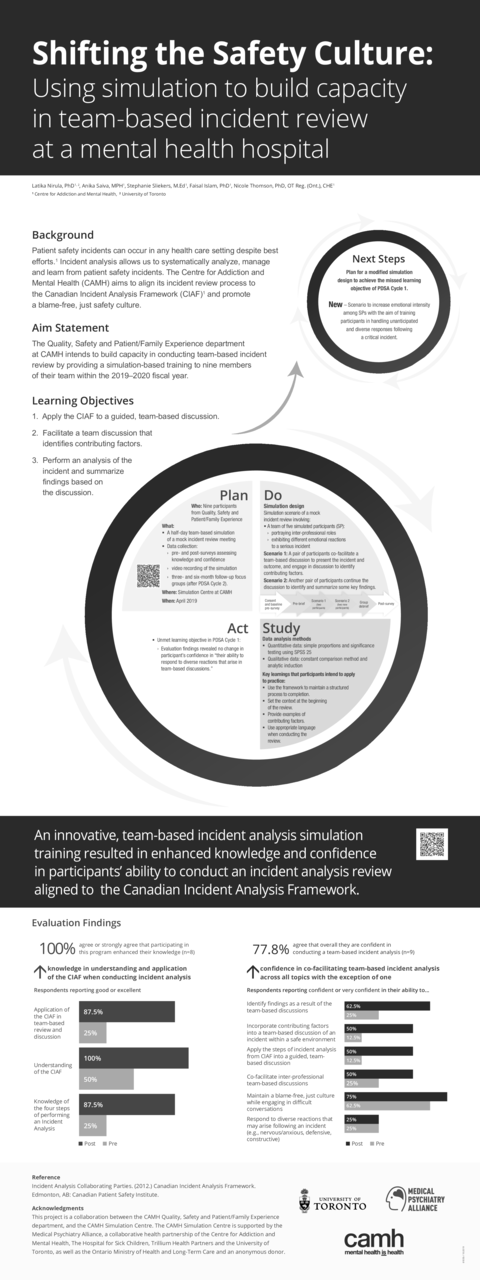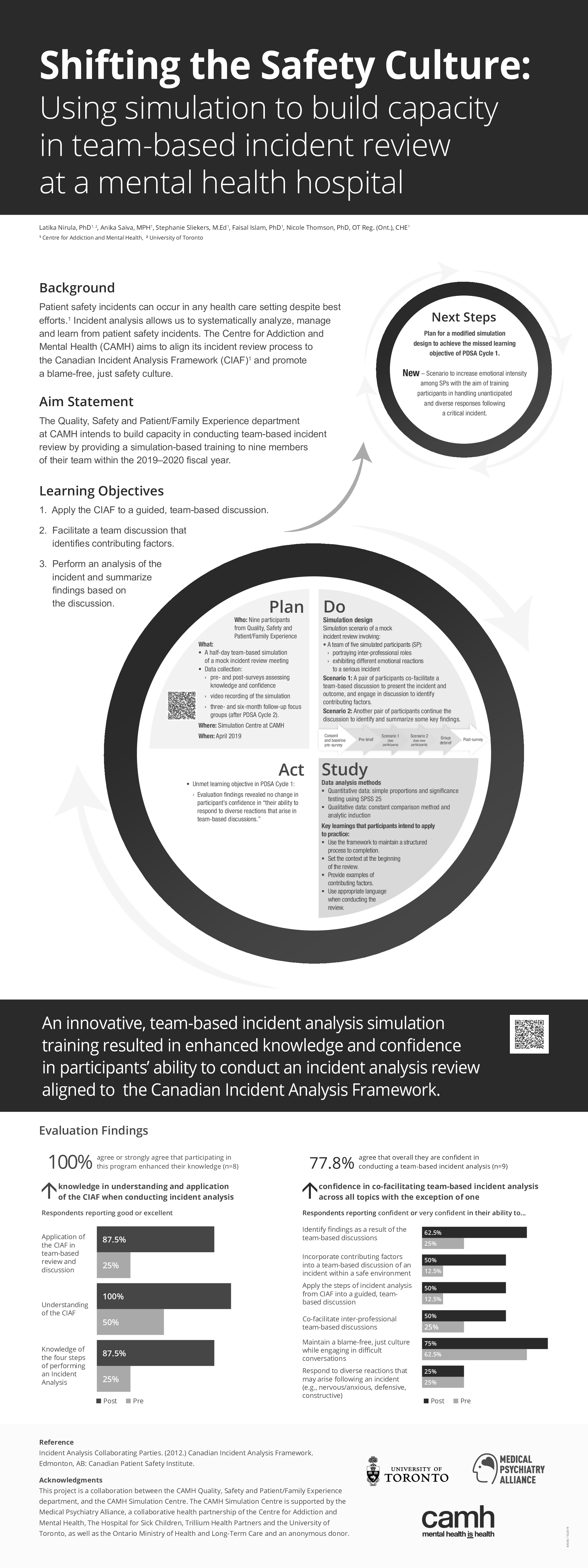Abstract
- Background/rationale/context
Patient safety incidents can occur at any healthcare setting despite best efforts1. Incident Analysis is a critical step in providing support to patients, families, staff and the organization while continuing quality improvement (QI) efforts in response to patient safety incidents1. It allows to systematically analyze, manage, and learn from patient safety incidents. The Centre for Addiction and Mental Health (CAMH) aims to align its process to the Canadian Incident Analysis Framework (CIAF)1 and promote a blame free, “just” safety culture. Given limited trained facilitators in this model, there is a significant need to build capacity in team-based incident analysis reviews at CAMH.
- Objective
The goal was to use a simulation-based approach to team-based incident analysis training to enhance facilitator’s ability to conduct a multilevel analysis of contributing factors and consistent application of the CIAF. Ultimately, the aim is to foster a safe, supportive, and blame-free environment, reflective of a “just” culture and promote continuous QI.
- Description of the innovation
A half-day Incident Analysis Simulation training was designed and delivered at CAMH in April, 2019. It involved a mock incident review with a team of simulated participants from various inter-professional roles, exhibiting different reactions to a critical incident on their clinical unit. This simulation had two parts: 1) A pair of participants co-facilitate a team-based discussion to present the incident and outcome, and engage in discussion to identify contributing factors that led to the incident; 2) Identifying and summarizing some key findings. Following the simulation, a structured group debriefing was used to promote understanding of the CIAF, reflection on elements of team dynamics in the facilitation context, and application to future reviews.
4. Impact
Data analysis is currently ongoing based upon pre- and post-training surveys. Analysis includes measures of confidence in conducting the incident analysis using the CIAF through improved team facilitation, and understanding of effective communication strategies when dealing with difficult conversations and unexpected responses of staff through the process. We anticipate that this initiative will support greater organizational capacity to support team-based reviews, and ultimately support a positive, “no-blame” culture of patient safety and quality improvement.






